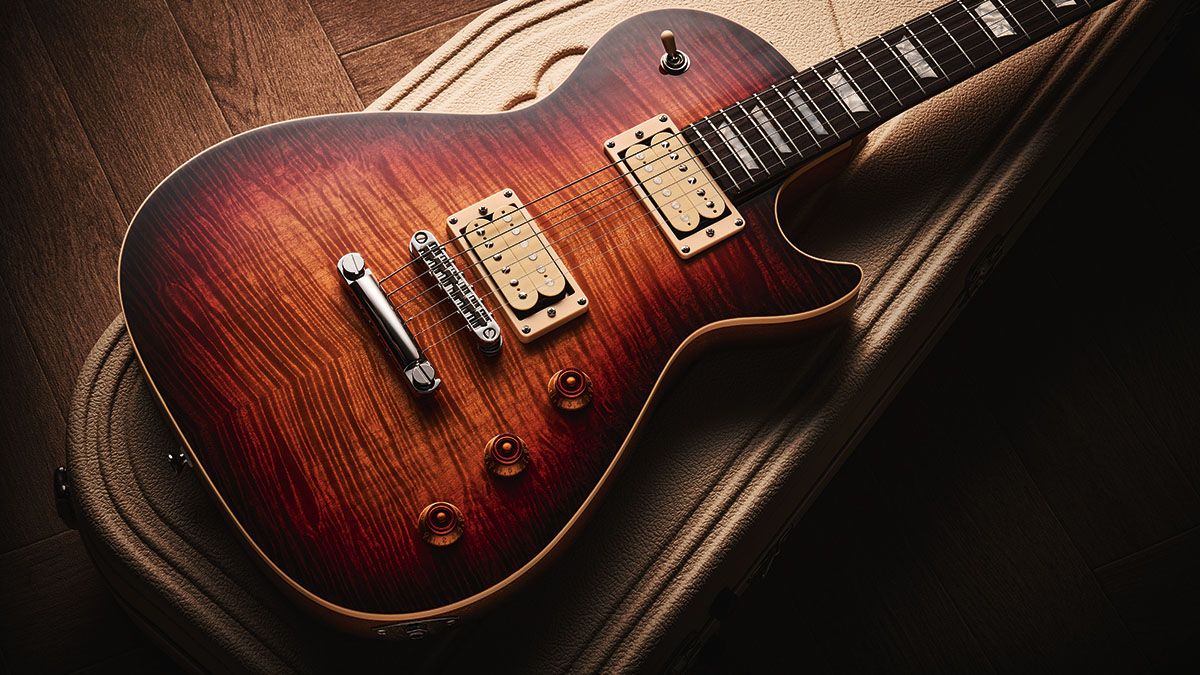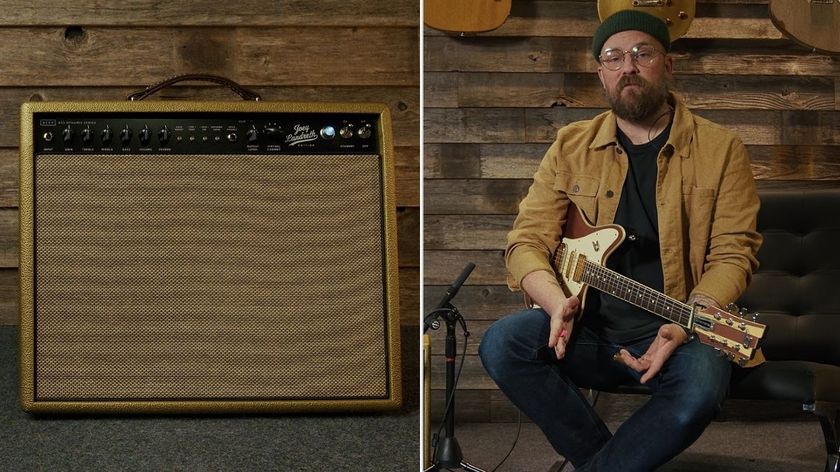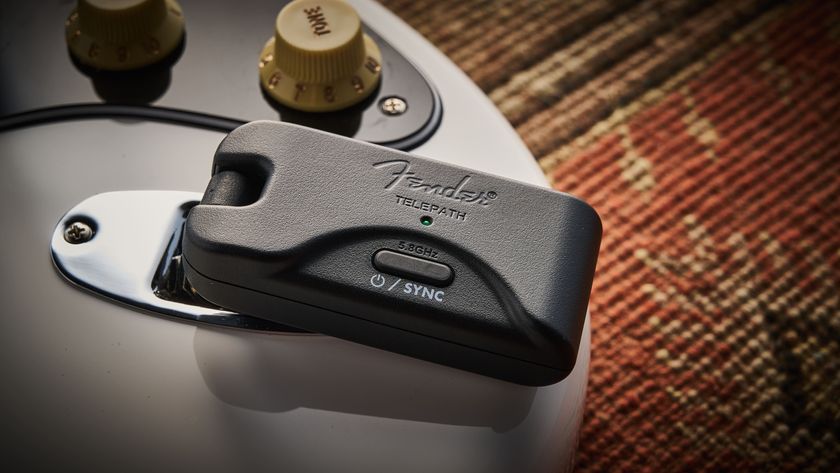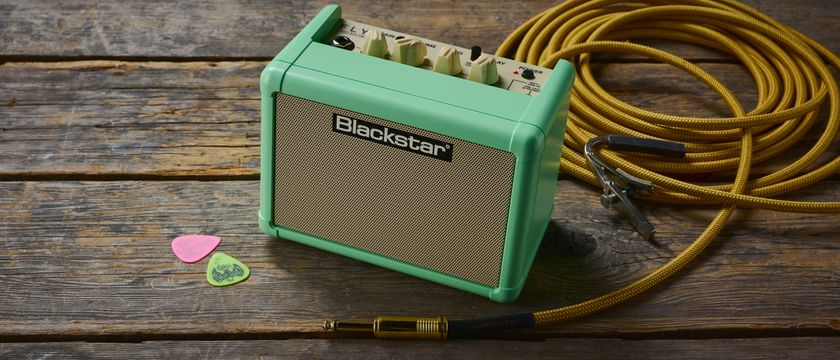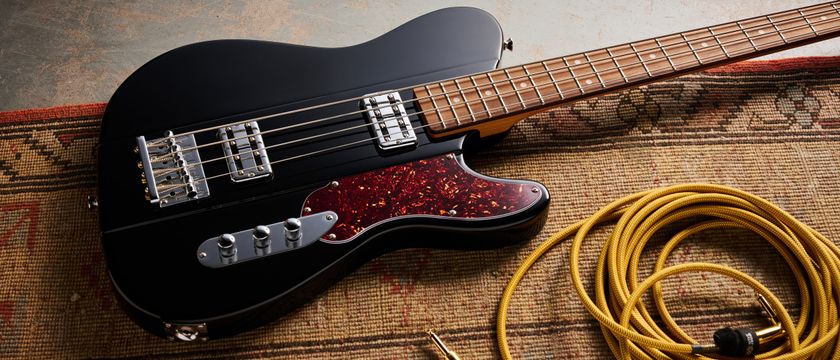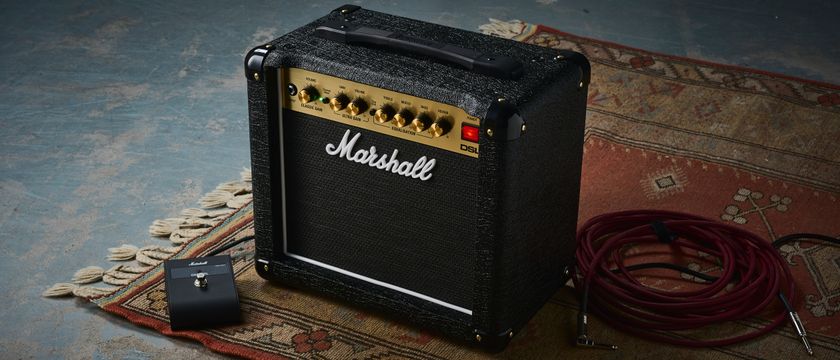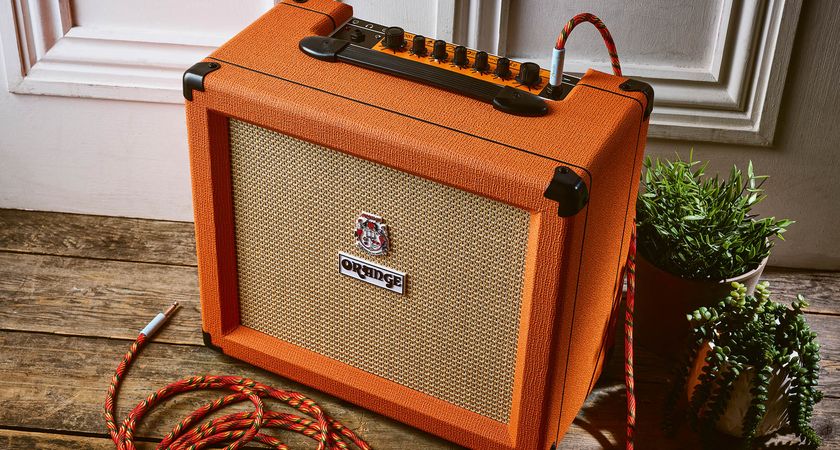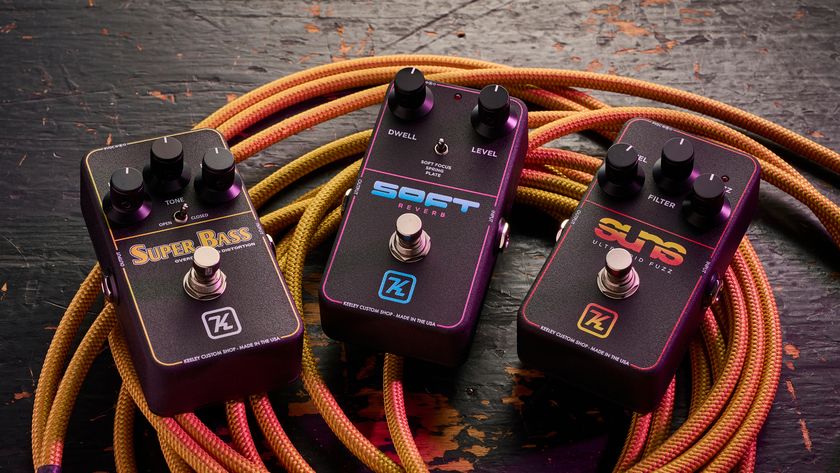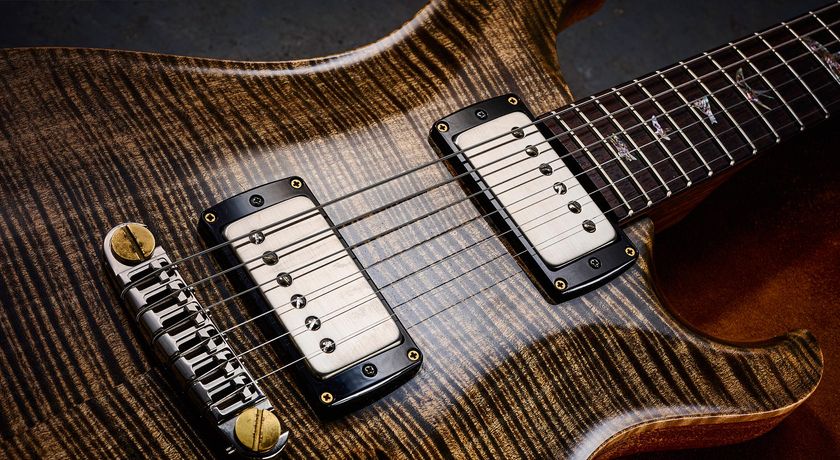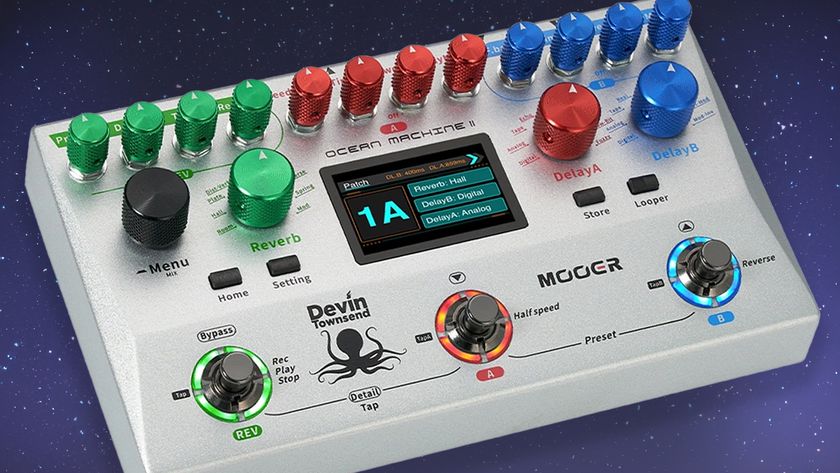Guitar World Verdict
Unlike a conventional fixed‑pickup guitar, you can instantly swap or mix ’n’ match units depending on your needs or your gig. Whatever route you choose, this really is a very valid design that’s well priced for its quality, not to mention innovation. A class act!
Pros
- +
Smartly made.
- +
Light weight.
- +
Improved pickup-swapping mounts.
- +
Tasty new Cream T humbuckers.
- +
An excellent player.
Cons
- -
Fingerboard edges feel a little square.
- -
Not everyone will enjoy that acoustic-style headstock or the flattened body base.
You can trust Guitar World
As we’ve documented throughout this year, the UK’s guitar manufacturing scene has seen plenty of change. When UK Guitar Builders (UKGB) closed its doors early in the year, it left Cream T without a manufacturing base for its innovative and pretty new Aurora and Crossfire models – both employing that instant pickup-swapping feature licensed from Relish Guitars in Switzerland.
Many will know Cream T as a pickup maker, of course, and that continued apace throughout at its Ormskirk base, even though original founder, Thomas Nilsen, left the building to pursue more bespoke pickup designs. It’s been a time of change all round, for sure.
But behind the scenes a dizzying amount of work was being undertaken. And from the ashes of UKGB a new manufacturing company was established (although at the time of press we can only say “somewhere in the UK”) that, as of the past few months, has been making V2 versions of those original Cream T guitars, staring with the Aurora Custom you see here.
One reason we were so interested in that original Aurora was not only its pickup-swapping potential but the fact that the guitar was a co-design between Thomas Nilsen and a certain Billy F Gibbons – all brought to life by PJD Guitars/UKGB founder, Leigh Dovey, and overseen by Tim Lobley, who is once again at the helm of the new designs.
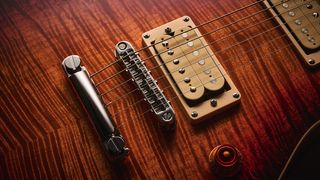
Version two, then, doesn’t stray far from the original unique design, although the branding has changed: it’s now ‘Cream T Custom Shop’, reflected by the new headstock logo, which was designed by industry veteran Mark Smith, who is now onboard as brand manager. It’s the most obvious way to tell new from old.
So, the original concept of the single-cut Aurora was to mix up a Telecaster with a Les Paul, topped off with that Martin-style headstock – and all of that is retained. The scale length is Gibson style, as are the hardware, the dual humbucker pickups and fingerboard inlays, though as before we have a master tone, rather than the dual tones of a Les Paul, plus individual pickup volumes and that shoulder-placed toggle switch.
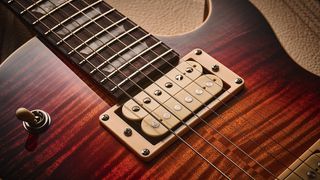
It’s effectively a slab body, a lightly chambered mahogany back (the chambering is slightly increased on the new models, we understand) and a bookmatched flame (or quilted) maple cap that’s lightly arched from bass to treble side and around 6mm thick. Like a Junior or Special, there are no ribcage or forearm contours, and only the top and headstock face are glossed nitro; the neck, body back and sides are all satin.
One constructional change is that the neck now fits into the body in Gibson style, so the edge binding runs all the way around the treble cutaway and stops where the neck butts to the body.
The previous design was more PRS in style where the whole width of the neck fits into the body, almost like a bolt-on neck that’s actually glued. Whether or not there are sonic benefits to either design is up for debate, but the version two does, in that regard, look a little smarter.
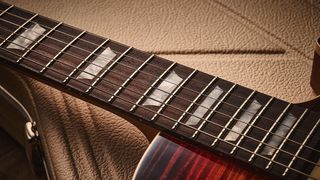
More subtle changes include the ongoing improvements to the Relish pickup-swapping system. Here, the holes that accept the rear-mount pickups now match the angle of the lightly back-angled neck; the mounting frames have been refined, too.
Another minor difference is the pickup mounting rings (a visual feature only), which revert to a generic style, rather than the more stylish UK-made Anomaly rings that featured on the originals.
The pricing and the range have been rationalised, too. The fixed-pickup version of the Aurora Custom kicks things off at £2,299; with pickup swapping, as here, it’s £2,499; while the specific BFGT is £2,999 with fixed pickups but can be special ordered with the Relish mountings.
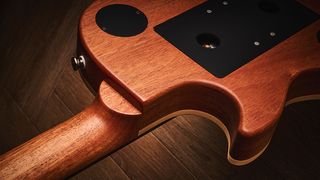
Feel & Sounds
Whether or not it’s simply lighter-weight wood and/or the new chambering in action, at 3.18kg (7lb), the V2 version we received is lighter than that first Aurora, which weighed in 3.67kg (8.1lb): a noticeable difference.
The neck feels smoother in the hand, too, and less open-grained, although in shape and profile there’s not a lot of difference. We have a 43mm nut width with a depth at the 1st fret of 21mm, 24mm by the 12th, with a pretty full C profile.
No, it’s not a Les Paul or a Telecaster, but there’s little doubt this is a quality single-cut that plays really well, and with these new Cream Of The Crop ’buckers, it sounds superb.
The fretwork is excellent; there’s a slightly wider and lower medium-jumbo wire, approximately 2.6mm wide by 1.2mm high. To be picky, the fingerboard sides feel a little square, lacking any incurve, and a little more rolling to the top edge would give it a less new feel.
Likewise, the perfectly cut bone nut does have some sharp edges and is not quite as burnished as the original. The neck pitch is very slightly steeper, too, meaning the bridge sits marginally higher. But these minor differences aside, the Aurora’s thinner, slab-body style feels considerably less bulky than a Les Paul. It’s a very comfortable guitar.
There’s marginally more volume and new-guitar crispness to the acoustic response, although the character is very similar with seemingly less midrange push than a good Les Paul. Running through the available sounds with the new Cream Of The Crop humbucker set, we’re clearly in the same ballpark as the Whiskerbuckers on our original Aurora, which we used for comparison here.
There’s a slightly better balance to the new set between the neck and bridge, and the latter sounds slightly fuller, with the uncovered pickups here possibly giving a little more crispness compared with the covered predecessors.
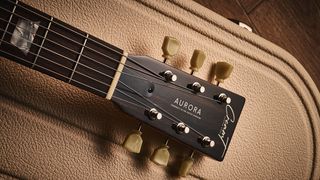
Of course, the beauty of the pickup-swapping feature is that we can easily change pickups and subtly – or more profoundly – shape the sound. In-store, in theory, you could voice the guitar to what you want to hear from Cream T’s different PAF-style flavours or single coils such as the Duchess P-90, Original Banger or the double Tele neck-style Banger & Mash.
A unique new design is the Frankenbucker with its hefty kick, and screw and slug polepiece mixed coils. It’s fascinating to use, not least if you’re auditioning and creating sounds for a recording.
Need a little more kick for a solo? No problem, just slot in that Frankenbucker at the bridge and away you go. A little cleaner and clearer? Whip that out and put in the Whiskerbucker. Fancy a jazzier neck voice for some rhythm comping or some cleaner jangle? Pop that Duchess in at the neck.
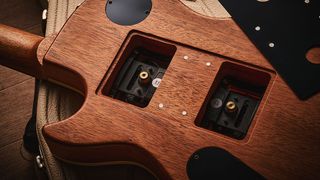
Verdict
Judging by this (albeit very early) sample, Cream T has found another manufacturing partner that can really deliver. There are a couple of minor points that we’d like to see improved upon, but this remains a very credible design, well crafted and with a very balanced voice.
It does have its own style, which not everyone will enjoy: the awkwardness of the acoustic headstock and that flattened body base, for example, not two mention those two big holes in the body for the pickup swapping if you go that route. And yet for other players it’s exactly that individuality that’s attractive.
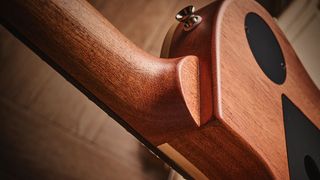
No, it’s not a Les Paul or a Telecaster, but there’s little doubt this is a quality single-cut that plays really well, and with these new Cream Of The Crop ’buckers, it sounds superb.
If you want to embrace the brave new world of pickup swapping, it will cost you an additional £200, as with our model, plus, the price of some different pickups, of course.
But unlike a conventional fixed‑pickup guitar, you can instantly swap or mix ’n’ match units depending on your needs or your gig. Whatever route you choose, this really is a very valid design that’s well priced for its quality, not to mention innovation. A class act!
Specs
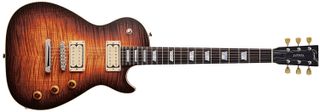
- PRICE: £2,499 (inc Hiscox case)
- ORIGIN: UK
- TYPE: Single-cutaway, chambered body
hardtail electric - BODY: 2-piece mahogany
- NECK: Quarter-sawn mahogany, ’59 LP-style profile, glued-in
- SCALE LENGTH: 629mm (24.75”)
- NUT/WIDTH: Bone/43.1mm
- FINGERBOARD: Rosewood, trapezoid inlays, 305mm (12”) radius
- FRETS: 22, medium jumbo
- HARDWARE: Gotoh tune-o-matic-style bridge and lightweight stud tailpiece, Gotoh vintage-style tuners with keystone buttons
- – nickel-plated
- STRING SPACING, BRIDGE: 51.5mm
- ELECTRICS: Cream T Cream of the Crop humbuckers, 3-way toggle pickup selector switch, neck and bridge volume controls (with pull-switch coil-splits) and master tone control
- WEIGHT (kg/lb): 3.18/7
- OPTIONS: The fixed pickup version costs £2,299. Quilt maple top option available soon
- RANGE OPTIONS: The fixed-pickup Aurora BFGT2 is £2,999; the Aurora BFGT2PS with pickup swapping is special-order only at £3,299
- LEFT-HANDERS: Not currently
- FINISHES: Burnt Whiskerburst (as reviewed), Whiskerburst, Charcoal Whiskerburst, Laguna Madre, Tequilla Sunrise, Bubblegum, Naked Whiskerburst (over spalt maple top) – gloss nitro top and headstock face; thin satin nitro to both body back, sides and neck back
- CONTACT: Cream T Custom Shop

Dave Burrluck is one of the world’s most experienced guitar journalists, who started writing back in the '80s for International Musician and Recording World, co-founded The Guitar Magazine and has been the Gear Reviews Editor of Guitarist magazine for the past two decades. Along the way, Dave has been the sole author of The PRS Guitar Book and The Player's Guide to Guitar Maintenance as well as contributing to numerous other books on the electric guitar. Dave is an active gigging and recording musician and still finds time to make, repair and mod guitars, not least for Guitarist’s The Mod Squad.
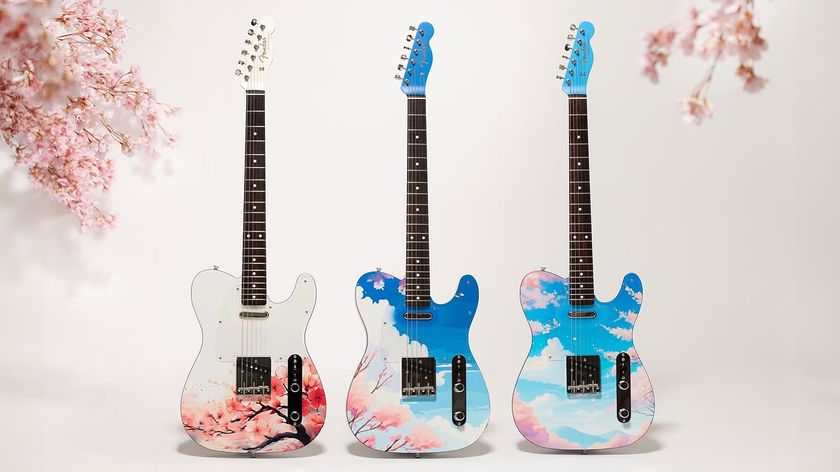
“Captures the essence of cherry blossoms”: Fender Japan stakes a claim for 2025’s most breathtaking electric guitar with the Sakura Telecaster
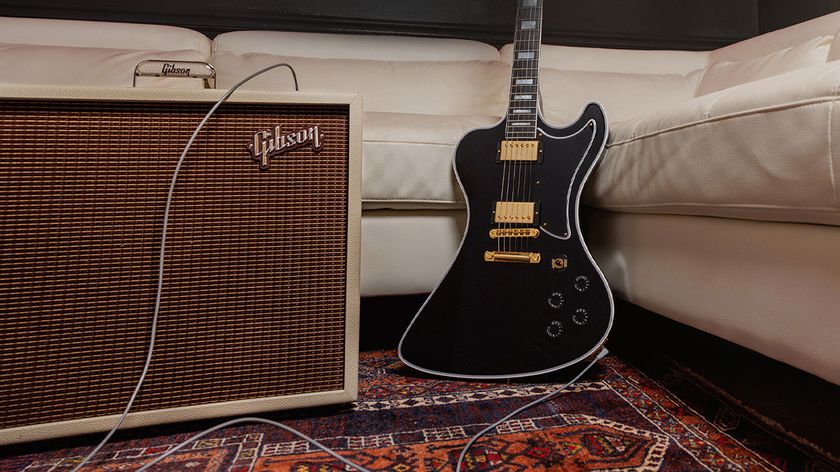
“A cult classic is reborn”: One of Gibson’s most obscure designs makes a comeback with the revival of the RD – and it's unlike any other Gibson Custom model around
